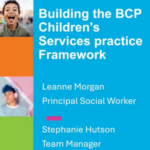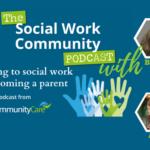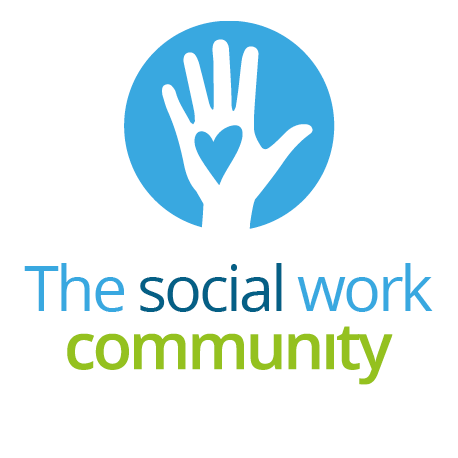
 This article provides practice tips from Community Care Inform’s guide on using trauma-informed approaches to work with adults. Written by systemic psychotherapist Lydia Guthrie, the in-depth guide covers the different types of trauma and the physical, emotional, cognitive and behavioural effects they can have. It also looks at the key principles behind a trauma-informed approach and how to put them into practice. Inform Adults subscribers can access the full content here.
This article provides practice tips from Community Care Inform’s guide on using trauma-informed approaches to work with adults. Written by systemic psychotherapist Lydia Guthrie, the in-depth guide covers the different types of trauma and the physical, emotional, cognitive and behavioural effects they can have. It also looks at the key principles behind a trauma-informed approach and how to put them into practice. Inform Adults subscribers can access the full content here.
Most social workers in adult social care work in services that primarily focus on the immediate presenting issues faced by clients and their accompanying care and support needs, rather than in services that are specifically organised around supporting people who have experienced trauma. However, many people who are affected by trauma seek support from social care services, whether or not the service considers itself to work with survivors.
For example, issues such as substance use, mental health problems, homelessness, self-harm, being in a domestically abusive relationship or being in the criminal justice system are often symptomatic of past trauma. And there is evidence that people who are in contact with mental health services are more likely than others to have experienced traumatic events (Sweeney et al, 2018).
This is why it’s important to recognise trauma and to understand how it can influence an individual’s way of relating to their situation and how their “behaviour” is often about keeping themselves safe, because that is how they’ve coped in the past.
Talking about trauma
Despite clear evidence linking psychological distress to experiences of trauma, survivors often report that they are rarely asked about traumatic experiences (Read et al, 2007).
When asked, practitioners say that they are afraid of asking about traumatic experiences for two main reasons: that they are paying attention to the person’s immediate needs, or that they are concerned that asking about the person’s experiences might cause them distress.
These are understandable concerns, and it can be difficult to get the balance right. Not asking about traumatic events can give a message that the worker isn’t interested, or that it is too shameful to talk about, but asking in an insensitive way or at the wrong time can cause distress.
Asking about traumatic events: practice tips
- Consider the purpose of asking about the person’s experiences of trauma:
Is it relevant to your work with them? How long are you expecting to work with each other? How will it help you to meet their needs if you know about their experiences? Does it feel ethical and safe to ask this question at this time? - Don’t ask during a crisis:
During a moment of heightened distress is not a sensible time to ask questions which encourage the person to revisit past traumatic events. - Offer a brief normalising statement before asking:
The purpose of this is to “warm up” the person to the idea that you are going to ask about some difficult experiences, rather than it coming out of the blue. The statement should include a recognition that they do not need to answer. For example, you could say: “I’m going to ask you about some experiences which you may have had during your life. The reason for this is that it can sometimes help us to understand difficulties later on. It’s ok if you don’t want to answer these questions at this time.” - If a person makes a disclosure of abuse:
If a person gives information about an identifiable person who has harmed them, then most agencies will require you to pass this information on to the relevant safeguarding authorities.
It is good practice to remind people about the limits of confidentiality as soon as possible in the conversation, so that they can make informed choices about how much to say to you. It can also be sensible to ask whether the person has ever spoken about it before, and what happened as a result.
If someone makes a disclosure, validate it and reassure them that it’s good that they have spoken about it. Also check out their current situation – are they safe and free from abuse now? If appropriate, it can be a good idea to ask the person what sense they have made of their experiences and how they think they relate to their current situation.
It’s important to focus on what they would like to happen next and what sources of support they can draw on. If possible, offer a follow-up contact, such as an appointment or a phone call with you at an agreed time, to reassure them that you aren’t rejecting them.
Throughout the conversation, be aware of your non-verbal communication – regulate yourself by breathing steadily, keep your speech slow and measured, and try to remain calm and still. The person speaking will be very tuned-in to your responses, and may be expecting to see non-verbal signs that you feel uncomfortable or that you will reject them.
References
Read J, Hammersley P and Rudegeair T (2007)
‘Why, when and how to ask about childhood abuse’
Advances in Psychiatric Treatment, Volume 13, Issue 2, p101-10
Sweeney A, Filson B, Kennedy A, Collinson L and Gillard, S (2018)
‘A paradigm shift: relationships in trauma-informed mental health services‘
BJPsych Advances, Volume 24, Issue 5, p319-33
If you have a Community Care Inform Adults licence, log in to access the full guide and read more on the different types of trauma and how the Power Threat Meaning Framework encourages practitioners to shift their thinking from “What’s wrong with you?” to “What’s happened to you?”






 Bournemouth, Christchurch and Poole
Bournemouth, Christchurch and Poole  Hampshire County Council
Hampshire County Council  Oxfordshire County Council
Oxfordshire County Council  South Gloucestershire Council
South Gloucestershire Council  Wokingham Borough Council
Wokingham Borough Council  Webinar: building a practice framework with the influence of practitioner voice
Webinar: building a practice framework with the influence of practitioner voice  ‘They don’t have to retell their story’: building long-lasting relationships with children and young people
‘They don’t have to retell their story’: building long-lasting relationships with children and young people  Podcast: returning to social work after becoming a first-time parent
Podcast: returning to social work after becoming a first-time parent  How managers are inspiring social workers to progress in their careers
How managers are inspiring social workers to progress in their careers  Workforce Insights – showcasing a selection of the sector’s top recruiters
Workforce Insights – showcasing a selection of the sector’s top recruiters 

 Facebook
Facebook X
X LinkedIn
LinkedIn Instagram
Instagram
Comments are closed.